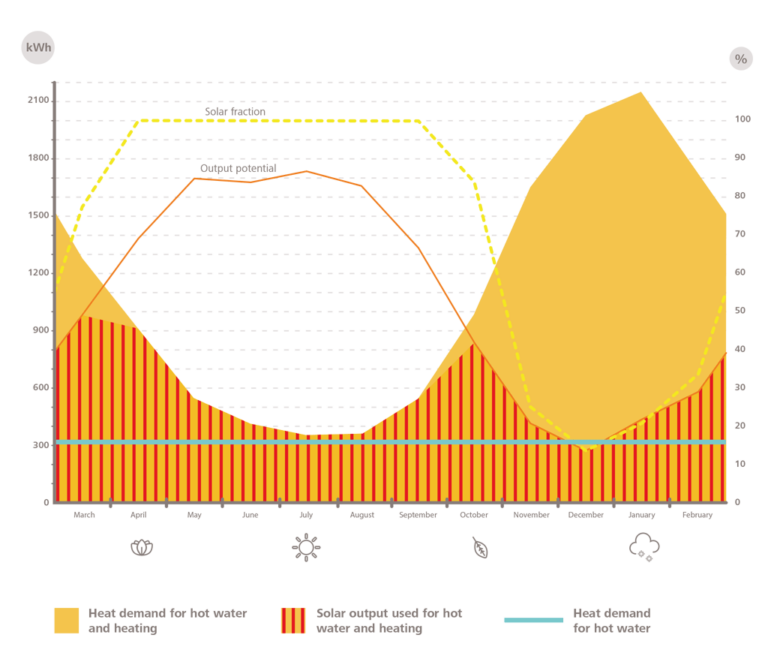SOLERGY - A LABEL FOR SOLAR THERMAL COLLECTORS
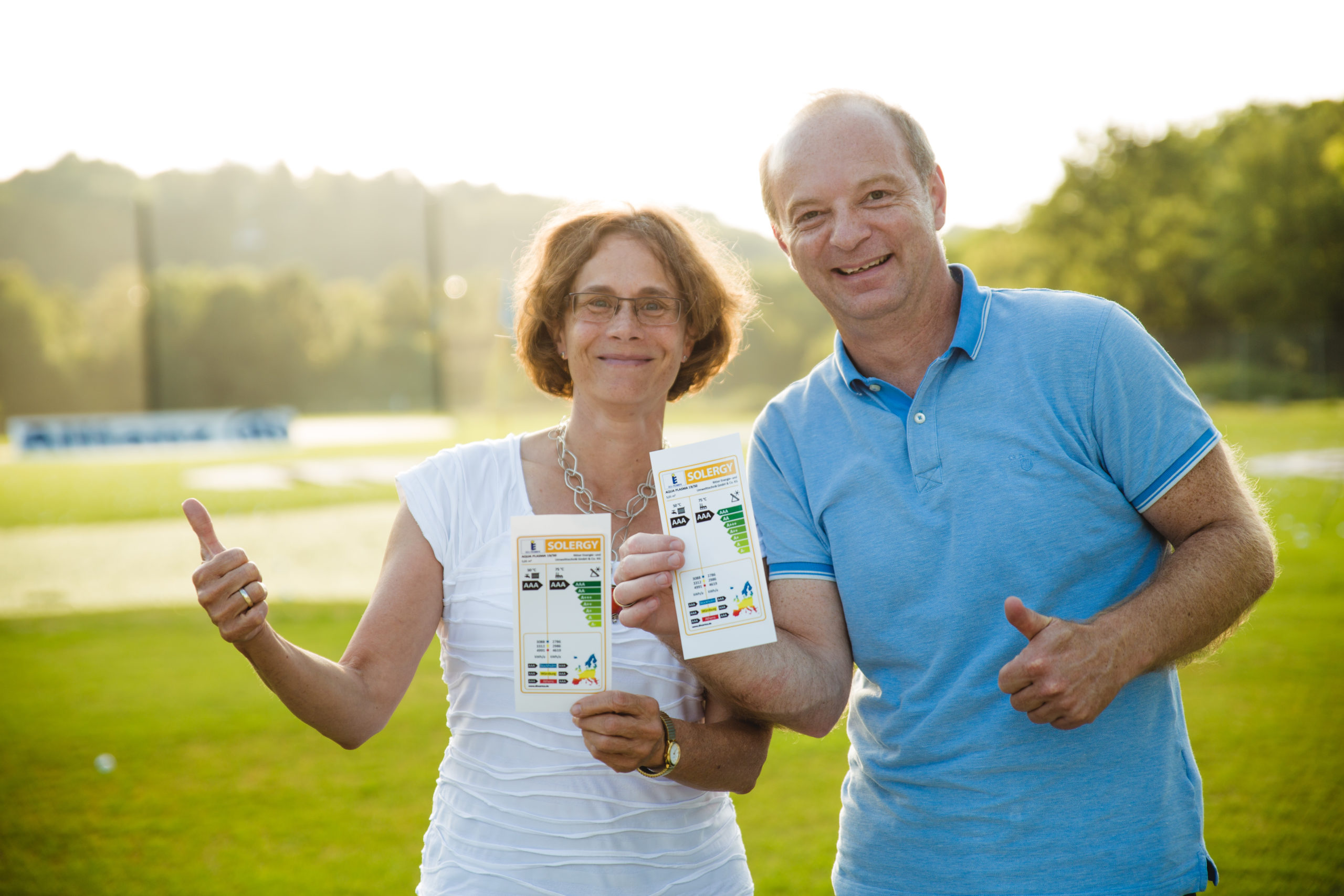
Clean heat, clearly rated
The SOLERGY Label is a trusted marketing tool that communicates the performance of solar thermal collectors in a transparent and consumer-friendly way. It allows manufacturers to showcase independently validated performance data, while helping policymakers and consumers make informed choices about sustainable energy solutions.
How it works
- Collectors are rated with clear A- to AAA grades, showing their energy production capacity for different regions and applications.
- To qualify, collectors must already hold a valid certification such as the Solar Keymark in Europe or OG-100 from the SRCC in the USA, since the performance data from these certification schemes is used to determine the ratings on the label.
- The SOLERGY Label is currently available for flat plate, evacuated tube, and PV-Thermal (PVT) collectors for water heating.
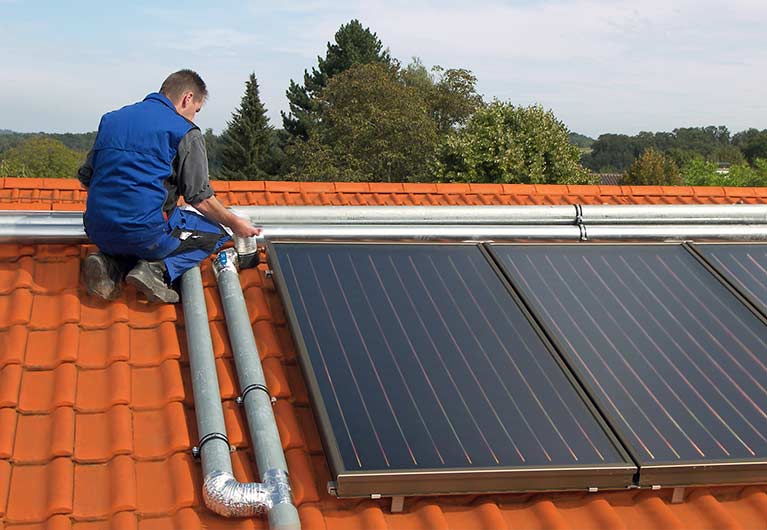
MAKES SOLAR HEAT's POTENTIAL VISIBLE
Solar thermal collectors supply renewable heat, therefore, the scale is always green. The longer and greener the arrow, the higher the contribution to decarbonization.
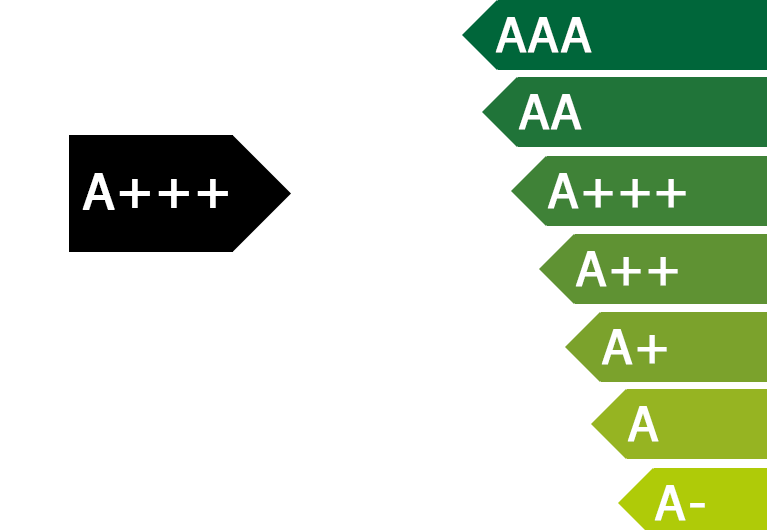
SHOWS EFFICIENCY OF SOLAR COLLECTORS
Wether for hot water, space heating, pool heating, industrial heat or electricity, the label shows how efficiently collectors use solar energy at different locations.
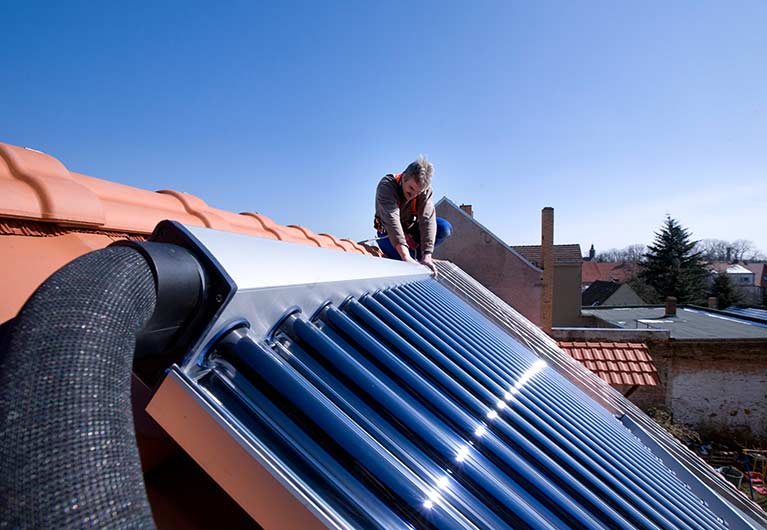
IS AN OUTSTANDING MARKETING TOOL
It looks familiar, but is quite innovative: the SOLERGY Label refers to the energy gain of solar thermal collectors because their primary energy consumption is minimal.

Certification first. marketing next!
To qualify for the SOLERGY Label, solar thermal collectors must already hold one of the following certifications:
- Solar Keymark in Europe
- OG-100 from the SRCC in the USA
The performance data from these certifications forms the backbone of the transparent A- to AAA SOLERGY ratings.
For consumer to be well informed and make conscious decisions, the output of the different collectors must be comparable. Whether hot water, space heating or process heat, the collector label provides reliable information about the solar output potential.
For the SOLERGY Labels in the European region, this value comes from the Solar KEYMARK data sheets which show exactly how many kilowatt hours a collector module can produce at different locations in Europe (Würzburg, Athens and Stockholm) per year, and is displayed on the SOLERGY Label. The Solar KEYMARK certificate is issued by an official body, for example by DIN CERTCO. It is a recognised certification standard for solar thermal products throughout Europe.
By the way: potential does not mean actual output. The solar output potential merely provides information on how much heat output can be achieved. If the heat is not used, for example because the storage is full, the potential maximum output can no longer be achieved.

Marketing value for manufacturers
Once awarded, manufacturers receive customized labels they can use on product labels, websites, and marketing materials. For example, a Spanish manufacturer actively integrates the SOLERGY Label into communication and sales strategy. It uses the label in commercial pitches to demonstrate product reliability, displays it at international trade fairs to attract customers, and has even published a blog post on its website to inform clients about the added value of the label. The company reports being very satisfied with the visibility and trust it creates.
A proven history, backed by strong partners
Launched in the European Union in 2016, and extended to North America in 2023, the SOLERGY Label builds on the well-known European Energy Label (ErP). It was developed by DIN CERTCO and the Solar Heating Initiative (SHI), who recognized the need for a clear performance label for solar thermal collectors producing clean heat onsite.
Since 2021, SHI has also joined forces with the Global Solar Certification Network (GSCN) to expand the reach of the SOLERGY Label worldwide, including Asia and Oceania.
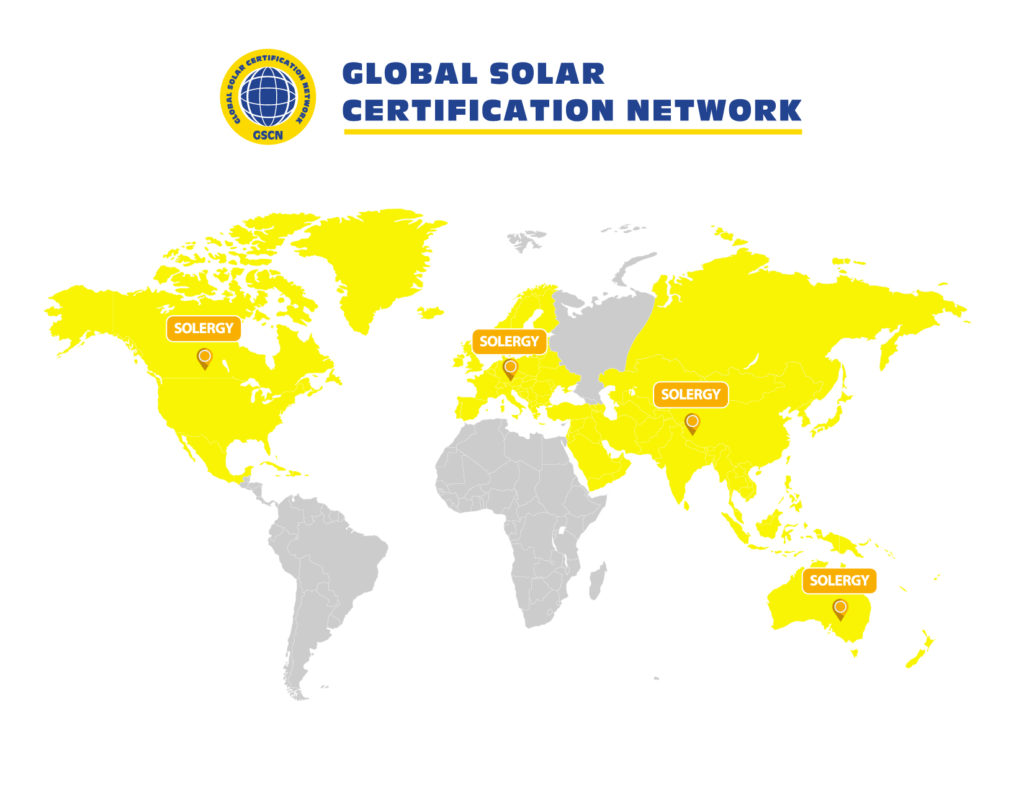
A clear label - lots of important information
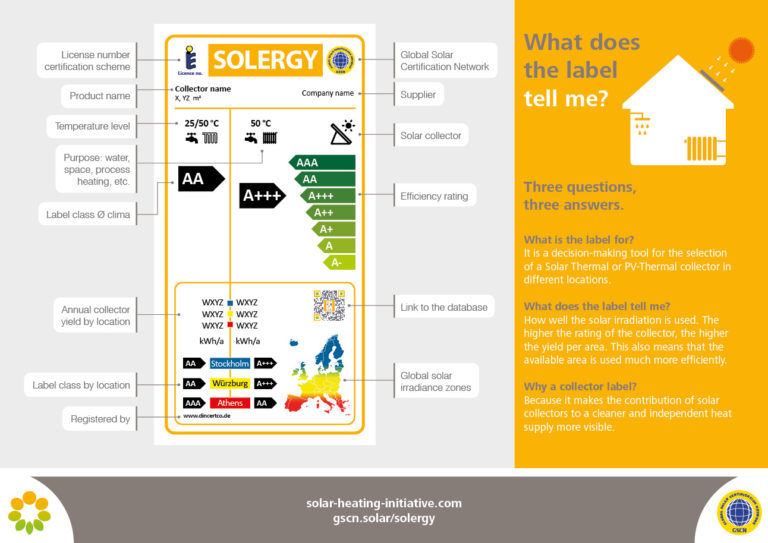
The first relevant information that the SOLERGY label provides is the temperature level and the corresponding application that the collector is most suitable for. A temperature level of 50 °C is necessary for domestic hot water and space heating, while a temperature level of 75 °C is needed for industrial applications or district heating. Manufacturers can choose between a label that depicts the application for 50°C and a combined label which shows that the collector can also be used in applications where need higher temperatures are required.
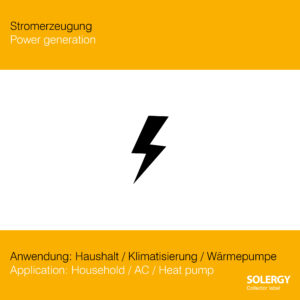

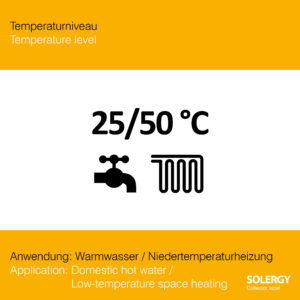
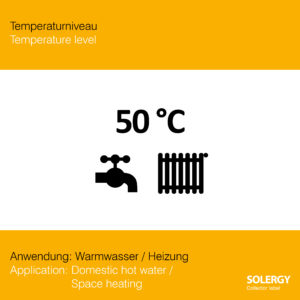
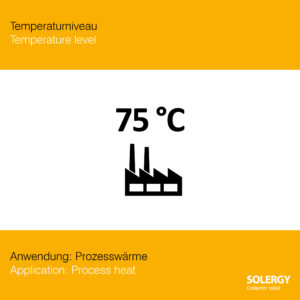
Looks familiar but is quite innovative
The energy efficiency label of the European Union is well known among consumers. Washing machines, lamps, televisions and other home appliances have such a label. From red to green, from G to A+++: the colour scale and the energy efficiency classification provide information about their energy consumption.
The SOLERGY Label refers to the energy gain instead of the primary energy consumption
Since September 2015, conventional heat generators such as gas boilers, heat pumps, heaters with cogeneration, water heaters and storage tanks should also be labelled. The EU efficiency label should help consumers to make an informed decision when choosing a heating system. The less primary energy the heating system uses, the more efficient it is.
Solar thermal collectors generate heat with almost no use of fossil energy. Therefore, they are not part of the EU product labelling scheme. Well-known manufacturers of solar thermal collectors joined forces through the Solar Heating Initiative and introduced the SOLERGY Label to shows how much heat solar thermal collectors can generate.
The goal: to help consumers choosing the product which best enables them to enjoy a sustainable and cost-effective heat supply.
Several aspects differentiate the SOLERGY label from the EU label:
One more difference is the direction of the arrows. In the SOLERGY label they go from the right to the left, which means that solar thermal collectors use almost no fossil fuels, but supply sustainable, economical, and CO2-free heat.

A green rainbow - The easiest way to choose the best collector
Solar collectors can be compared by the heat that they can generate, the potential solar output. In the SOLERGY Label, this potential is divided into seven classes. These output classification shows how well the irradiated solar energy is used for heat generation. It is based on the annual efficiency of the collector. The higher (and greener) the class, the greater the renewable energy output (solar heat).
Why green? Solar collectors are sustainable energy suppliers and not fossil energy consumers. They generate almost no CO2 emissions – and this is worth a “green”. The range of solar thermal collectors available on the market is wide and it is worth a closer look.
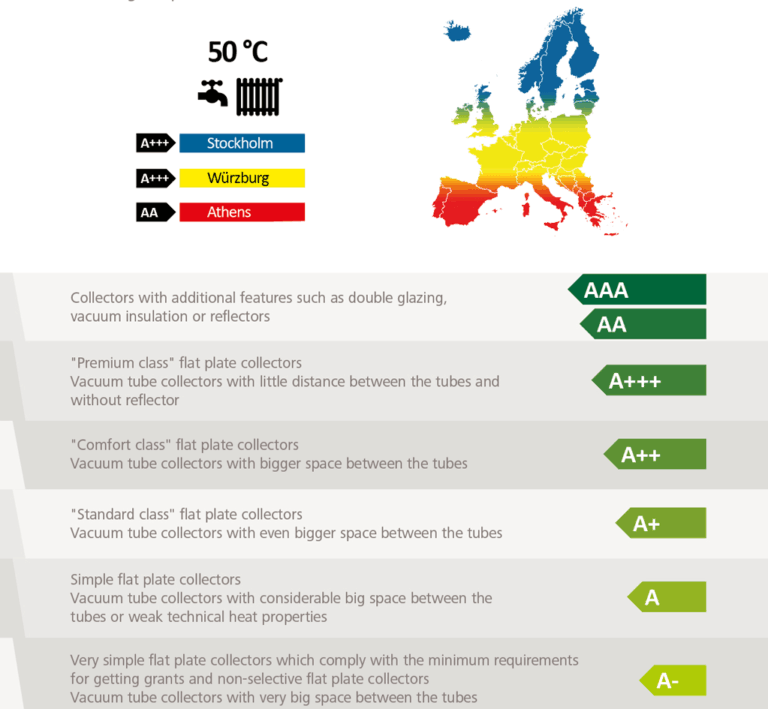
Fits like a glove? Then you have the right solar thermal system
8-month comforting autonomy with CO2-free heat from solar thermal collectors
Most of the energy for heat is consumed during the winter. Nevertheless, this doesn’t mean that you don’t need energy for space heating and hot water for the rest of the year.
Anyone who wants to buy a solar thermal collector should therefore make sure that it also supplies a high heat output even in seasons with little solar radiation – in the transitional periods and during the winter.
A solar collector is the heart of a solar thermal system; it is like the engine of a car. However, even the best collector can achieve an optimum performance only if all other components of the heating system are of the same technological quality and match to one another.
Too small, too large or outdated storage, as well as poorly insulated pipes, have a negative impact on the solar output.
Most of the energy for heat is consumed during the winter. Nevertheless, this doesn’t mean that you don’t need energy for space heating and hot water for the rest of the year.
Anyone who wants to buy a solar thermal collector should therefore make sure that it also supplies a high heat output even in seasons with little solar radiation – in the transitional periods and during the winter.
A solar collector is the heart of a solar thermal system; it is like the engine of a car. However, even the best collector can achieve an optimum performance only if all other components of the heating system are of the same technological quality and match to one another.
Too small, too large or outdated storage, as well as poorly insulated pipes, have a negative impact on the solar output.
